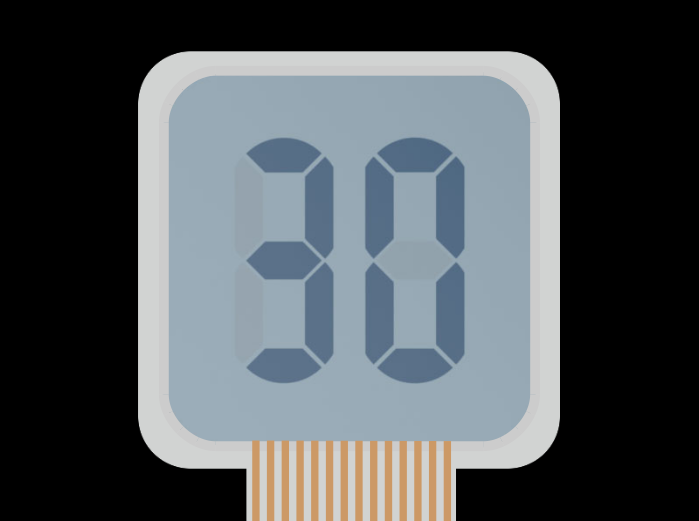Introduction
Electrochromic devices can work in transmittance or in reflectance. In the simplest cases, the electrochrome incorporated in the device uniformly changes the color or the intensity of the light that goes through. For display applications, the distribution of the active part is no longer uniform over the front area of the device. It is patterned [1] in order to produce data or images that often can be modified dynamically. Many applications of electrochromic displays can be foreseen. A main advantage is their very-low power consumption. A recent example is a display for food labels on which the expiry date can be written and modified dynamically according to the storing conditions.
 |
The left-hand side image shows a flexible electrochromic display produced by Ynvisible Interactive Inc [2], partner of the project. The device contains two 7-segment features, each segment is addressed by an electrode from which it can be made colorful. |
Electrochromic devices can also work as sensors [3]. As an illustrative example, an electrochromic cell can be designed in such a way that the color of the device sets up when the temperature exceeds a given threshold. Here, the colorful stage of the electrochrome is due to a temperature-driven increase of the electrolyte conductivity, producing an irreversible oxidation or reduction of the electrochrome. Accordingly, the color of the cell will stay, even if the temperature decreases again. Such a device can signal a damaging heat exposure of frozen food, for instance .
- "Controlling the electrochromic properties of conductive polymers using UV-light" R. Brooke, J. Edberg, D. Iandolo, M. Berggren, X. Crispin, and I. Engquist, J. Mater. Chem. C 6 (2018) 4663-70 [DOI: 10.1039/c7tc05833k].
- https://www.ynvisible.com/.
- "Ink-jet-printed semiconductor electrochromic nanoparticles: Development and applications in electrochromism", T. Moreira, M. Maia, A.J. Parola, M. Zangoli, F. Di Maria, and C.A.T. Laia, in "Chemical Solution Synthesis for Materials Design and Thin Film Device Applications" (Elsevier, 2021) 407-437 [DOI: 10.1016/B978-0-12-819718-9.00021-2].